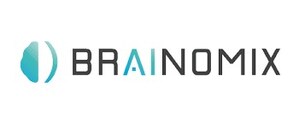OXFORD, England, Oct. 10, 2019 /PRNewswire/ -- A new study published this week in the International Journal of Stroke (IJS) showed that Brainomix's e-ASPECTS software can reliably tell doctors how much brain is injured in stroke patients using universally available CT scans, without the need for more complex advanced imaging.
The study showed that the region of the brain that is irreversibly injured in stroke patients (the ischemic core) can be defined using state-of-the-art artificial intelligence (AI) algorithms on routinely acquired CT scans. The e-ASPECTS results in the study correlated strongly with advanced imaging techniques, such as CT Perfusion and MRI. The study also found that e-ASPECTS volumes were strong predictors of clinical outcomes in stroke patients, supporting Brainomix's ongoing mission to advance the value of simple imaging for stroke networks across the globe.
The study, conducted by physicians from a number of leading German hospitals, looked at scans and clinical information from 388 patients using the latest version of Brainomix's e-ASPECTS software, one of three modules comprising Brainomix's e-Stroke Suite, the most comprehensive stroke imaging software. e-ASPECTS uses AI algorithms to automatically identify and quantify acute ischemic core within seconds of the scan acquisition. Ischemic core volume is increasingly being used by doctors to select treatment for stroke patients, particularly for those presenting outside traditional treatment time windows. Until now, such information has only been available at hospitals with urgent access to advanced imaging resources, limiting the provision of advanced stroke care to a minority of patients.
"The study results show that e-ASPECTS volume provides a robust assessment of the early brain injury in stroke patients using only non-contrast CT scans, without the need for difficult-to-access advanced imaging. This is vitally important, as the vast majority of hospitals around the world do not have advanced imaging in their Emergency Departments. Even for those hospitals that do have advanced imaging hardware, it is often slow and can introduce delays to time-critical stroke treatments. This study exemplifies the revolutionary way that the e-Stroke Suite uses AI to leverage more information out of the data that hospitals are already acquiring, but just not utilizing. This technology can give doctors in any hospital worldwide more information to help them treat stroke patients better," noted Dr. George Harston, Chief Medical Officer and Innovation Officer for Brainomix, and stroke physician at Oxford University Hospitals NHS Foundation Trust.
This study is just the latest in a series of clinical trials published this year involving Brainomix's innovative software. In July, a study published in the Journal of Neurointerventional Surgery (JNIS) by the Heidelberg stroke team showed that e-ASPECTS scoring and core volume estimation could improve their network's treatment and referral decision-making.
"At Brainomix, we are committed to advancing the validity of our state-of-the-art technology through robust clinical evidence. This latest study reinforces the value of our e-ASPECTS software and aligns with our mission of providing solutions to an entire stroke network. We are maximizing the value of simple imaging, making life-saving stroke treatments accessible to all patients," noted Dr. Michalis Papadakis, CEO and co-founder of Brainomix.
The full study can be found here at the International Journal of Stroke website.
Brainomix’s e-Stroke Suite® is the most comprehensive imaging solution, empowering clinicians across all stages of the stroke patient pathway and supporting the thrombectomy decision-making process, from non-contrast CT interpretation, to collateral assessments and LVO detection, to more advanced perfusion-based assessments.
SOURCE Brainomix
WANT YOUR COMPANY'S NEWS FEATURED ON PRNEWSWIRE.COM?
Newsrooms &
Influencers
Digital Media
Outlets
Journalists
Opted In






Share this article